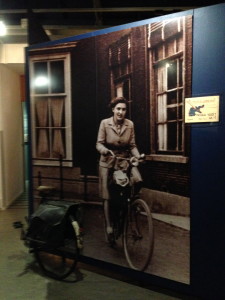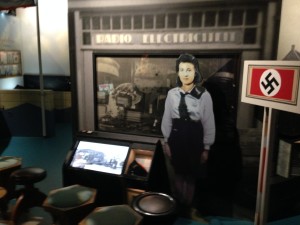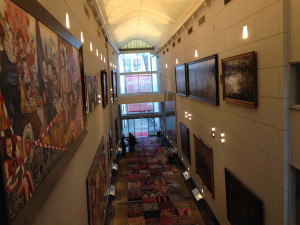Go to the award-winning Dutch Resistance Museum (Verzetsmuseum). The majority of English speaking visitors go to the Anne Frank House, which has a great deal to offer. But it remains the story of one remarkable girl who was, in the end, a victim. The Resistance Museum puts the Anne Frank story in context, with award-winning exhibits which include everything from printing presses (for underground papers) to Nazi propaganda movies to strollers with hollowed out bottoms to hold guns. The Museum weaves together many individual stories, so you do get to know people, but it also helps you understand the larger context. You do walk a mile in the moccasins of the people who were here at that time, trying to do what was right, and understand how complicated life was for them.

The museum has added a new wing aimed at children and youth which traces the lives of several kids – a girl who was in the Nazi Youth Organization, a Jewish girl, a boy whose father was in the resistance, and a boy whose family were royalists (hence anti-Nazi). After being introduced to them all in individual multi-media presentations, you go into a smaller space which represents their home, and many things happen inside.

Around the corner is the new National Holocaust Museum. It is about to undergo major construction and renovation, so check to be sure it’s open – but if it is, it has already mounted some incredibly moving exhibits and is wonderfully worthwhile. Here’s a post about my last visit there in March 2019.
When you’re hungry, for an informal snack or lunch, go to the corner Café Koosje, a delightful compromise between the warmth of the old-fashioned brown café and a more open arrangement with lots of windows. The menu similarly has old favorites and excellent localvore choices. If you want to go truly upscale, go instead across the street from the Verzetsmuseum to De Plantage, an elegant eatery in a vast conservatory behind the old Population Registry. There’s a resistance story there, with a plaque.
Go to the Amsterdam Museum. Even if it’s not raining or cold, you can enhance your experience of the city a thousandfold by going to this former orphanage which is packed with well displayed treasures and films. Despite GPS, it’s not that easy to find. Go to the intersection of Kalverstraat and Spui. Walk on Spui away from the Rokin (where trams run), and you’ll come to a big square (with a book market on Friday, art on Sunday). Turn right immediately, going past Caffe Espirit. You’ll be in the narrow Gedempte Begijnensloot. Soon, on your left, you’ll see the stone doorway to the Begijnhof, a jewel not to be missed but not now if time is limited. Continue straight and you’ll find yourself in the Civil Guards’ Gallery of the Amsterdam Museum. Look at the fantastic, huge portraits (old and new), heave a sigh of relief, and ask the guard where to find the entrance.

Amsterdam History in an Hour Once inside the Museum, you’ll find Amsterdam DNA, a few large galleries which are essentially a Cliff’s Notes to the whole collection. Using short films and a wide variety of objects – shoes, paintings, pottery, you name it – you’ll get a quick view of what’s distinctive about Amsterdam and how it developed. If you have an interest in shipbuilding, or canal expansion, or how some of the first social services in the world developed, or dozens of other topics, you’ll find more depth in the galleries which follow. Just ask, or wander through. It’s huge, so you may want to focus.
Time for a Snack When you get tired, you can go to the Museum restaurant for a nibble, or for a more distinctive experience, try De Rozenboom, just a few steps away in the Rozenboomsteeg. The food and cozy atmosphere show off Dutch food and arts. A traditional eggy pancake never goes amiss.
When you’ve done all this, you can get on with the “musts,” the Anne Frank House, the Rijksmuseum and Van Gogh Museum and the many others. But at least you will have a feeling for the city and what made it, both in the deep past and in 1940-45.
